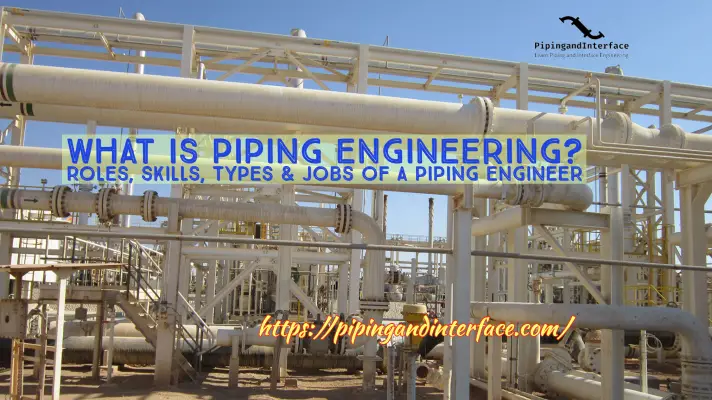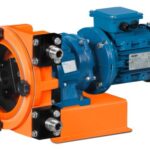All pipeline engineers are well aware of the terms hot bending and cold bending. In general, pipelines do not use normal elbows for directional changes. The pipes are bent in a bending machine to the required angle and installed at the site. From the terms themselves, it is quite clear that hot bending uses the application of heat. In this article, we will learn about hot bending and cold bending and their differences.
What are the hot bending and cold bending of pipelines?
Hot bending and cold bending are two techniques used to shape pipelines to fit a particular installation or routing requirement.
Hot bending involves the use of heat to soften the metal of the pipe so that it can be bent to a desired angle without breaking or cracking. This is typically done using a specialized machine that heats the pipe to a specific temperature and then applies pressure to the pipe to bend it to the desired angle. Hot bending is often used for larger-diameter pipelines and for pipes made of materials such as carbon steel, stainless steel, and alloys.
Cold bending, on the other hand, involves bending the pipe without heating it first. They use only mechanical force to bend the pipe section. This technique is typically used for smaller-diameter pipes or pipes made of materials such as copper or plastic. Cold bending is often performed manually or with a simple bending machine that uses mechanical force to bend the pipe.
Both hot bending and cold bending are important techniques for shaping pipelines, and the choice of which technique to use depends on the size, material, and application of the pipe. Bending machines are used to bend a pipe.
Methods of Cold Bending
The widely used methods of cold bending are:
- Rotary Draw Bending that uses a combination of dies and other various components working in a rotary action to bend the pipe.
- Mandrel Bending that uses a mandrel inside the pipe being bent.
- Compression Bending that uses a counter die to bend the pipe around a stationary die.
- Roll bending that creates large radius bends by passing the pipe piece through a series of rollers.
Hot bending is also known as Induction Bending. As it uses higher temperature, the material softens and less force is required for the bending process.
What are the major differences between hot bending and cold bending?
The major differences between hot bending and cold bending are:
Temperature: Hot bending requires heating the pipe to a specific temperature to make it more pliable, while cold bending is done without any heat.
Material: Hot bending is typically used for larger-diameter pipes made of materials such as carbon steel, stainless steel, and alloys, while cold bending is often used for smaller-diameter pipes made of materials such as copper or plastic.
Equipment: Hot bending requires specialized equipment that can heat the pipe and apply pressure to bend it, while cold bending can be done manually or with a simple bending machine.
Precision: Hot bending is generally more precise than cold bending, as the heated pipe is more pliable and can be bent to very specific angles. Cold bending can produce more variation in the angles of the bends.
Cost: Hot bending is generally more expensive than cold bending, as it requires specialized equipment and more time to heat the pipe and make the bend.
Overall, both hot bending and cold bending are important techniques for shaping pipelines, and the choice of which technique to use depends on the size, material, and application of the pipe.
When is hot bending selected?
Hot bending is typically selected in the following circumstances:
- Large diameter pipes: Hot bending is often used for larger diameter pipes that cannot be bent using cold bending techniques.
- High-strength materials: Hot bending is often required for high-strength materials such as carbon steel, stainless steel, and alloys, which may be prone to cracking or breaking if bent using cold bending techniques.
- Precise angles: Hot bending can produce bends with very precise angles, making it ideal for pipelines with complex routing requirements that require specific angles and curves.
- High-volume production: Hot bending can be used for high-volume production runs, as it can bend many pipes quickly and efficiently.
- Avoidance of wrinkles or kinks: Hot bending can prevent the formation of wrinkles or kinks in the pipe, which can compromise the integrity of the pipeline.
Overall, hot bending is often selected for larger diameter, high-strength pipes with complex routing requirements that require precise angles and curves. It is also often used in high-volume production runs and to avoid wrinkles or kinks in the pipeline.
What are the criteria for selecting cold bending?
The criteria for selecting cold bending include:
- Smaller diameter pipes: Cold bending is typically used for smaller diameter pipes that can be bent without the need for heating.
- Materials: Cold bending is suitable for a wide range of materials, including copper, aluminum, and some plastics.
- Simple bending requirements: Cold bending is ideal for pipelines that require simple bends or curves with less precise angles, as it can produce a variety of angles and curves relatively quickly and with less expensive equipment.
- Cost: Cold bending is generally less expensive than hot bending, as it does not require specialized equipment or the use of heat, making it a more cost-effective solution for smaller-diameter pipes and simpler bending requirements.
- Manual bending: Cold bending can be done manually or with simple bending machines, making it a flexible option for on-site fabrication and installation of pipelines.
Overall, cold bending is often selected for smaller diameter pipes with simple bending requirements, a wide range of materials, and where cost-effectiveness is important. It is also often used in the on-site fabrication and installation of pipelines due to its flexibility and simplicity.
Which is preferable for pipelines; hot bending or cold bending?
Whether hot bending or cold bending is preferable for pipelines depends on various factors such as the pipe diameter, material, bending requirements, and cost considerations.
Hot bending is often preferred for larger-diameter pipes made of high-strength materials such as carbon steel, stainless steel, and alloys that require precise angles and curves. Hot bending is also preferred for high-volume production runs and where wrinkles or kinks must be avoided. However, hot bending is generally more expensive than cold bending and requires specialized equipment.
Cold bending, on the other hand, is often preferred for smaller-diameter pipes made of materials such as copper, aluminum, or plastic, and where simpler bending requirements are needed. Cold bending is generally less expensive than hot bending and can be done manually or with simple bending machines, making it more flexible for on-site fabrication and installation.
Therefore, the choice between hot bending or cold bending will depend on the specific needs of the pipeline project, including factors such as diameter, material, bending requirements, and cost considerations.







